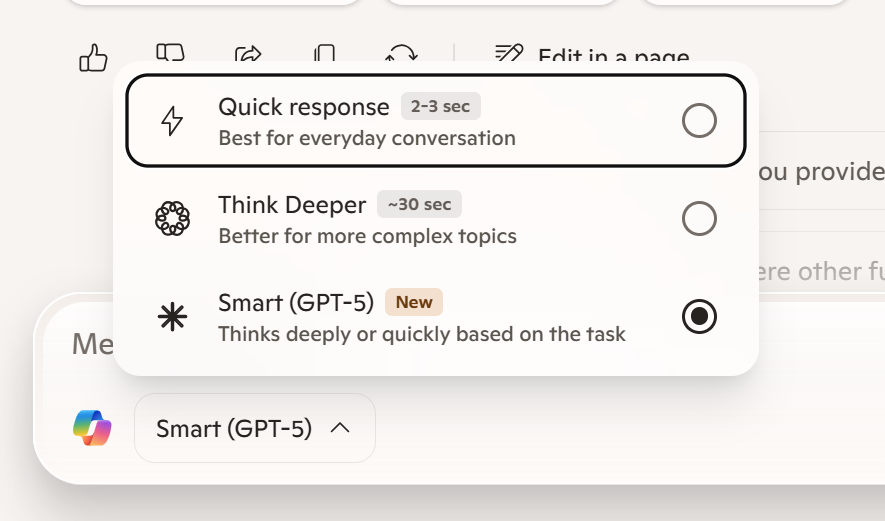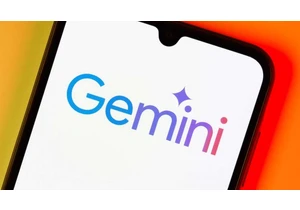Microsoft has added GPT-5 to Copilot, a day after adding OpenAI’s open-source GPT model to its local services.
GPT-5, which also powers ChatGPT, is now live within Copilot, at copilot.microsoft.com, Microsoft said Thursday. Presumably the same model will eventually power the Copilot application running on top of Windows PCs, but the Windows app appears to use just the older GPT-4 model for now, at least on my PC.
OpenAI launched GPT-5 on Thursday, promising leaps in general intelligence as well as specialized improvements in creative writing, coding, and health purposes. In coding, OpenAI claimed that it could create a website in just a single prompt.
GPT-5 includes what OpenAI called a router, assigning queries to specific tasks based upon the complexity of the assignment. On Microsoft’s Copilot site, you’ll need to manually enable it via the drop-down menu. Based upon the description — “Thinks deeply or quickly based upon the task” — it too seems to have the router functionality active.

A dumb but otherwise telling prompt, “How much wood could a woodchuck chuck if a woodchuck could chuck wood” quickly produced an answer: 700 pounds of wood. But when asked to “show your work,” Copilot delivered a lengthier explanation. It still wasn’t as detailed as the GPT-5 explanation available on ChatGPT, though the two AI engines arrived at the same answer.
Expect to see GPT-5 within Microsoft 365 Copilot as well as GitHub Copilot, Visual Studio Code, and Azure Foundry, Microsoft said. Microsoft said GPT-5 on Azure AI Foundry will be available today, but its presence on GitHub Copilot was couched in future terms.
On Wednesday, Microsoft said that it was bringing gpt-oss-120B and gpt-oss-20B to Azure AI Foundry, and GPU-optimized versions of the gpt-oss-20B model to Windows devices through Foundry Local. These open-source GPT-4 models require a discrete GPU with more than 16GB of VRAM.
I ran the gpt-oss model on the Framework Desktop, with its Ryzen AI Max+ 395 CPU and integrated GPU, which can be configured to assign 96GB of its available memory as VRAM for a significant performance boost. It actually produced better answers than a substantially more complex Meta Llama Scout 109B model that ran on the same hardware.
Meanwhile, Microsoft said it believes the GPT-5 model is safer than its predecessors. “The results show that the reasoning model exhibited one of the strongest AI safety profiles among prior OpenAI models against several modes of attack, including malware generation, fraud/scam automation and other harms,” it said.
https://www.pcworld.com/article/2872003/microsoft-copilot-is-now-powered-by-gpt-5-too-mostly.html
Accedi per aggiungere un commento
Altri post in questo gruppo

OpenAI on Thursday announced GPT-5, the foundational model for the ne

Microsoft has made a big deal of the fact that Windows 10 moves out o


Prompt injection is a method of attacking text-based “AI” systems wit

How much speed do you need when you’re getting sweaty with your gamin


Windows Explorer has always seemed like a part of a small car’s toolk
